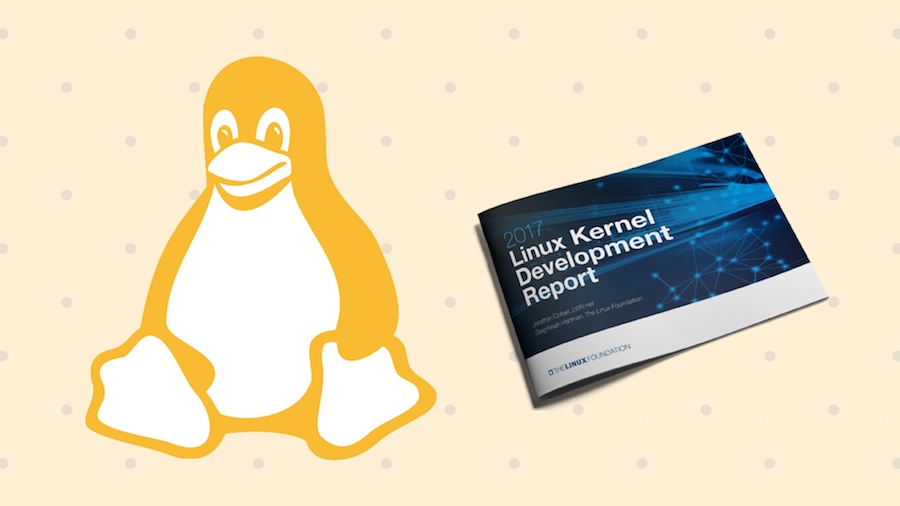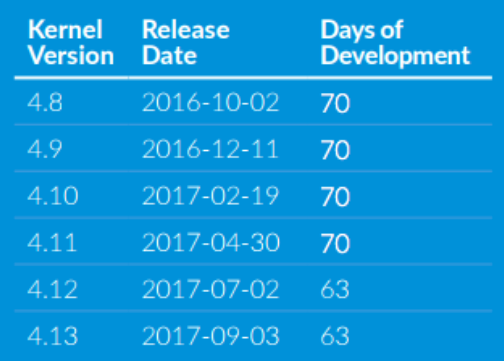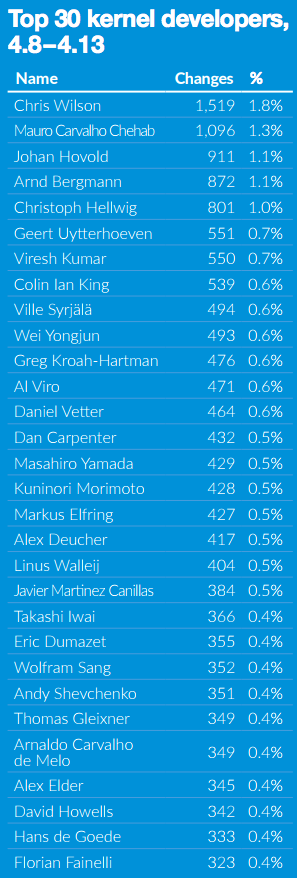With the help of regular updates in the form of stable releases every nine to ten weeks, Linux kernel significantly keeps improving hardware support. You can read about kernel’s working in our dedicated article. Last month, this project completed its 26th birthday. Recently, The Linux Foundation, the non-profit organization which takes care of kernel development, released its 2017 Linux Kernel Development Report.
The report covers the major development trends since the kernel 4.7 release and the overall lessons learned from 26 years of Linux development in general.
Highlights of the development of kernel 4.8 to 4.13
From Linux kernel 4.8 to 4.13, about 83,000 changesets have been merged from 4,319 individual developers from 519 corporations. While the number of developers and changesets have increased from the last report, the number of companies remained the same.
The 4.9 development cycle was the busiest in Linux kernel history in terms of changes merged. 4.12 set a new record in terms of involved developers and new contributors.
If we take a look at the kernel source size, it has grown steadily since its initial 1991 release. Back then, it was just about 10,000 lines of code. Over the 4.8-4.13 cycle, the source size has increased by 22 million to 24.8 million lines. In other words, over this period the community added about 15 files and 7,500 lines of code every day.
Who is contributing to Linux kernel?
The developers contributing to the kernel development work are the most important aspect of the whole process. Since the git era, i.e., the 2.6.11 release in 2005, a total of 15,637 developers have contributed. However, there is still a small number of contributors who are doing the major work. The top 30 developers have contributed about 16% of the total code.
You can find the top 30 kernel developers during 4.8-4.13 development phase here:
Over the past few years, Linux kernel’s development has increased on corporations. Increased number of companies are working toward the improvement of the kernel. For each developer, the corporate affiliation was determined using different factors like email address, sponsorship information, etc. Still, lots of developers are grouped under “unknown.”
Here are the top companies that have contributed the most:
Lessons learned in 26 years
The 2017 Linux Kernel Development Report also underlines some of the key lessons learned during the process. Here are they:
- Short release cycles are important
- Importance of Tools
- A distributed, hierarchical development model is great for process scalability
- Importance of consensus-oriented model
- “No regressions” rule
- Increased importance of corporate participation
- No need for internal boundaries within the project
In the upcoming years, we hope that more developers and corporations participate in the Linux kernel development process. There are various guides available online which can help you get started with the same in a hassle-free manner.














